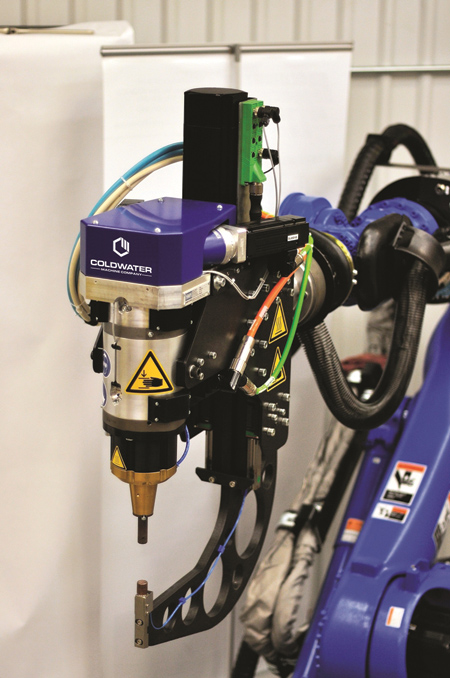
Coldwater Machine's SpotMeld system enables spot welding of non-ferrous sheet materials, offering an alternative to resistance spot welding, laser welding and riveting.
Coldwater Machine Company offers its SpotMeld system, which is based on Refill Friction Stir Spot Weld (RFSSW) technology. SpotMeld, available from Coldwater's Solid State Joining Center, enables spot welding of aluminum (1000 - 7000 series), magnesium, non-ferrous and dissimilar sheet materials, offering an alternative to single-point joining processes like resistance spot welding, laser welding and riveting.
"With the move toward lightweighting, OEMs are all looking for the most effective way to cut weight without sacrificing quality or safety," said Coldwater Machine President Tim McCaughey. "The existing technologies needed to process these lighter material typically add weight or cost, result in low weld strength or have porosity defects. Our friction spot welding system overcomes these issues and is efficient enough to run in a production environment."
Coldwater Machine's SpotMeld friction stir spot welders can be configured to application specifics and mounted on any industrial robot. A variety of weld recipes can be used on demand by the robot controller, which results in a flexible production system.
Relying on RFSSW technology, the SpotMeld system uses rotational friction to heat the materials along with pressure to forge together the parts using wear-resistant tooling to join two or more surfaces. Basically, heat is generated between the tool and material, creating a soft region. Pressure is then applied, resulting in a solid state joint. In addition to its ability to join dissimilar and lightweight materials, benefits include high quality joints with a small heat affected zone, consistency in weld duplication and faster weld times, as well as being environmentally cleaner and safer with no filler material, spatter, smoke, radiation or shield gasses.
For more information contact:
Coldwater Machine Company
911 North Second Street
Coldwater, OH 45828-8736
419-678-4877
info@coldwatermachine.com
www.coldwatermachine.com